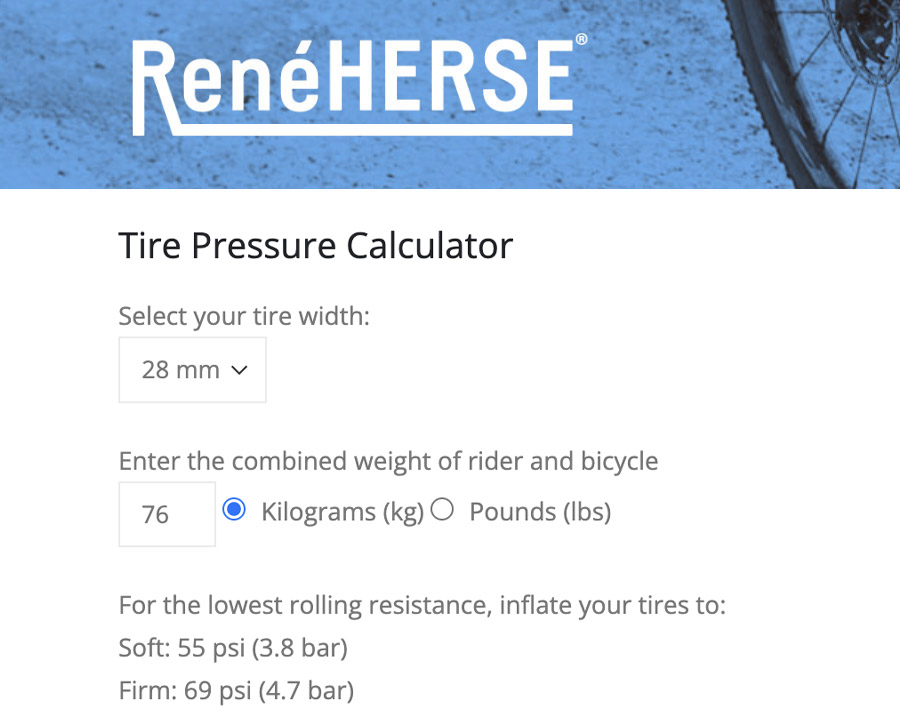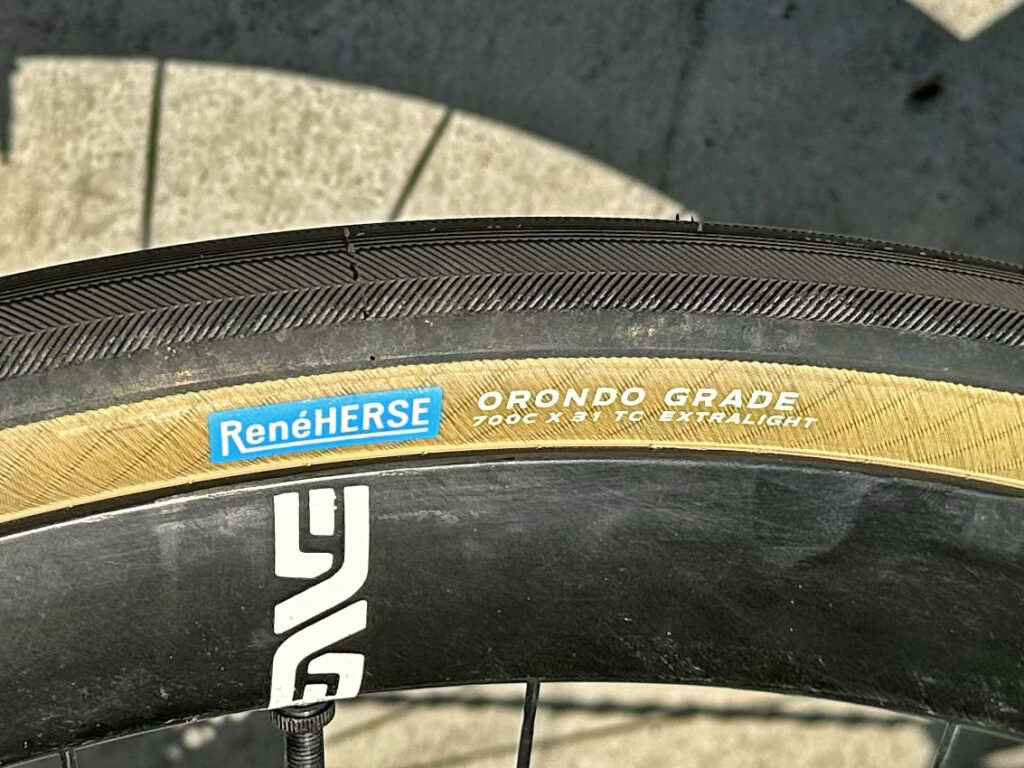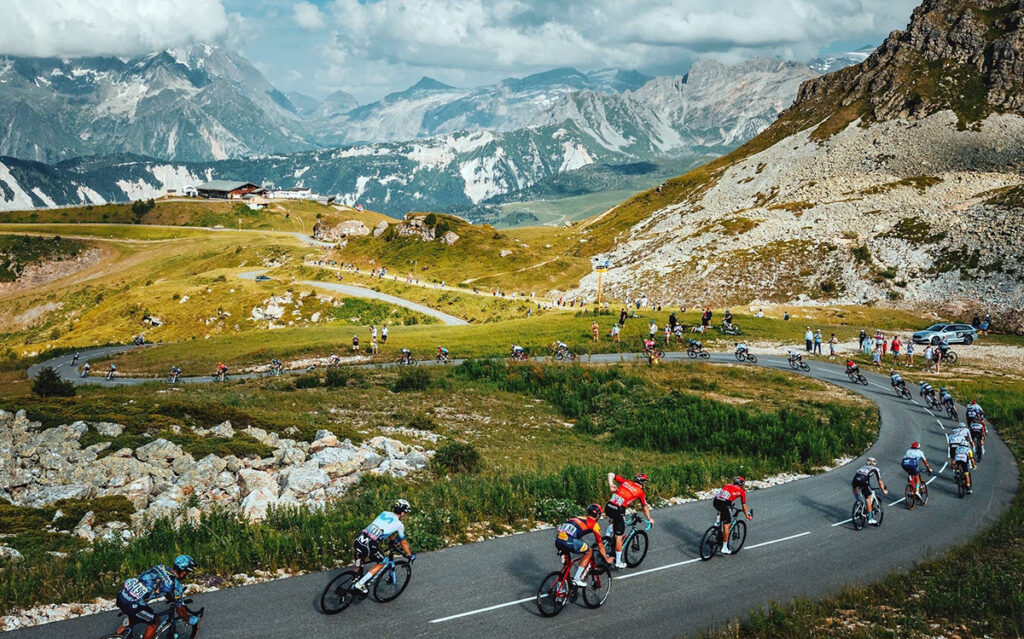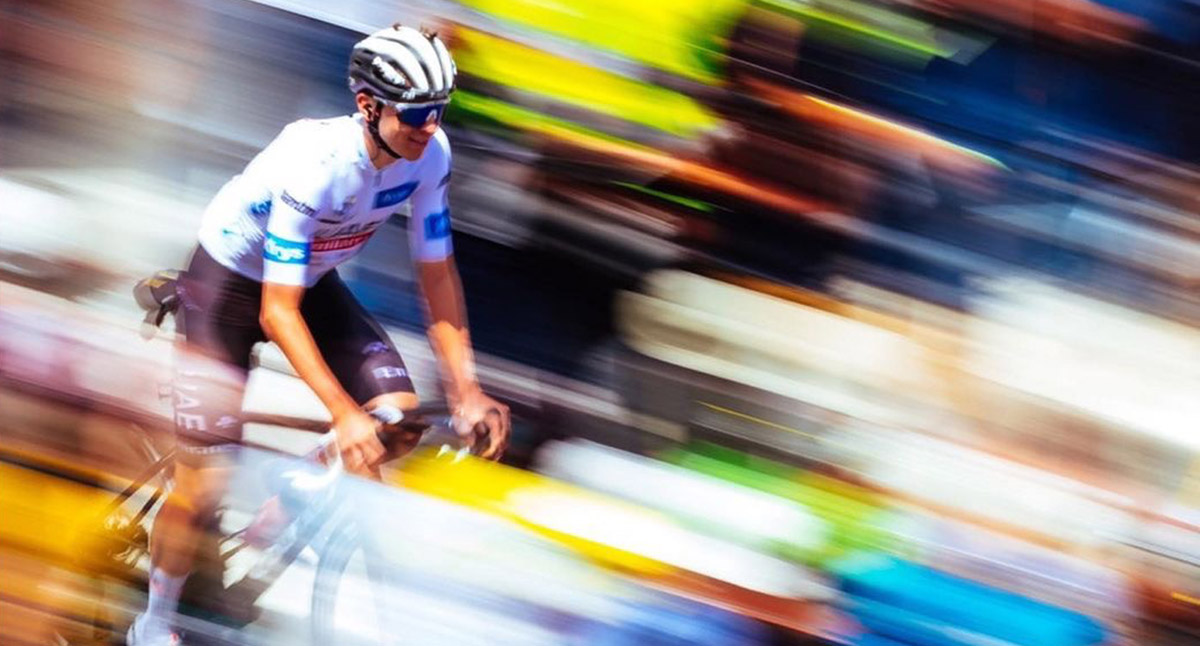Pogačar uses RH Tire Pressure Calculator?
Tadej Pogačar is the undisputed star of pro cycling this year. After winning the Volta a Catalunya, Strade Bianche and Liège–Bastogne-Liège in dominant fashion, he’s the favorite for the Giro d’Italia that starts on Saturday. That may not come as a surprise if you are following pro cycling: Pogačar has been a rising star ever since winning the 2020 Tour de France at the young age of 22. What will surprise many is that he is running his 28 mm tires at just 55-58 psi (3.8-4.0 bar). It’s clear that the All-Road Bike Revolution has reached the pro peloton.
When our first tire tests suggested that 25, 28, 30 and even 35 mm tires were faster than the 23s the pros were running at the time—this was way back in 2006—and that ultra-high pressures of more than 100 psi (6.9 bar) didn’t make tires faster, many skeptics asked us: “If that’s true, why aren’t the pros racing on wide tires at low pressures?” Our answer back then was: “Just give them some time.” And indeed, after we shared our results with the technical adviser of a big pro team, that team switched to 25 mm tires, and soon the others followed. Within a few years, 25 mm tires became the new standard in the pro peloton, just as our research had suggested.
We thought that would be it, since even wider tires (>25 mm) are neither faster nor slower, at least on the smooth roads of most European races. With no speed advantage for wider tires, we thought that their heavier weight (more rubber) would discourage pros from going wider than 25 mm. After all, wider tires will spin up (marginally) slower in a sprint. But now the pros have adopted 28 mm tires, and many are experimenting with 30s. It seems that superior cornering grip and lower rolling resistance on rough surfaces are worth the slightly heavier weight of the wide tires, even for the pros. These days, 28 mm tires are considered ‘normal’ for road bikes.
Less noticed has been the rapid decrease in tire pressure in the pro peloton. Cyclist magazine reported that Tadej Pogačar is running just 55-58 psi (3.8-4.0 bar) in his 28 mm tires. That’s less than half of what pros ran used to run! How did Tadej and his team arrive at such low pressures?
Tire pressure calculators have become popular in recent years. In the past, most cyclists inflated their tires to the max pressure indicated on the sidewalls, but we now know that running lower pressures has many advantages: more speed, more grip, more comfort, fewer flats. To learn more about Pogačar’s tire pressure, we plugged his stats—28 mm tires, 76 kg including clothes, bike and two full water bottles—into a few tire pressure calculators.

The popular Silca tire pressure calculator asks for many variables. Once we specify that Pogačar is a Pro Tour rider who rides a road bike with 700C high-performance tires on smooth roads, we get a recommendation of 81 psi for the front and 83 psi on the rear. In metric units: 5.55 bar (front) and 5.7 bar (rear). That’s 50% higher than what Pogačar is actually running!
If we change the surface condition to ‘Worn pavement / some cracks,’ the Silca calculator still recommends 76.5 psi front / 78.5 psi rear (5.3/5.4 bar). Clearly, those values are pretty far from what the pros actually ride. And Pogačar isn’t the only one: Tom Pidcock is reportedly running similar low pressures.
Our understanding of tire pressure has changed radically, so it’s not surprising that there is some variation in tire pressure recommendations. What do these pro riders know that the popular tire pressure calculators are missing?

To find out how Pogačar’s tire pressure compared to the results of our testing, we plugged his values into the Rene Herse tire pressure calculator. This is much simpler, because there is no need to input factors that don’t affect the fastest tire pressure in real-world riding. As far as we know, this is the only pressure calculator that’s based on real-world performance testing of hundreds of tires, plus measurements of tire drop for different rider weights and tire widths. You could call it the ‘scientific tire pressure calculator.’ It’s the only calculator that gives you the lowest rolling resistance, rather than just ‘recommended values.’
Based on our research, Pogačar will roll fastest at either at a ‘soft’ pressure of 55 psi (3.8 bar) or at a ‘firm’ pressure of 69 psi (4.7 bar). The calculator gives you two values, a ‘soft’ and a ‘firm,’ because we’ve found that tires roll fastest at two distinct pressures: One minimizes the flex of the tire itself, while the other reduces vibrations and suspension losses. (The two factors interplay; more about the science is in the links at the end of this article.)
You’ve probably already noticed: Pogačar’s pressure is exactly the ‘soft’ pressure that the Rene Herse tire pressure calculator recommends for him. I’m sure Pogačar and his team have experimented a lot with tire pressure, and they’ve probably tried all the popular tire pressure calculators. It’s nice to see that they’ve arrived at the same pressure as the Rene Herse tire pressure calculator. I guess that’s the beauty of science—it really works.
What surprised me is that Pogačar runs the ‘soft’ and not the ‘firm’ pressure. I also run my tires at the ‘soft’ pressure, because I like that keyed-into-the-road feel as the tires conform to the road surface—and many of my rides include rough pavement and/or gravel. But I put out much less power than Pogačar. Won’t Tadej’s bike bob up and down when he’s putting down the watts during his devastating attacks? Apparently not.
The testing that underlies the Rene Herse calculator was done on smooth surfaces. For rough roads, running the ‘soft’ pressure is our recommendation, as it’ll make you faster. Maybe that’s what Pogačar is thinking: Why chance it and run tires that are too firm to counter attacks on the roughest spots of the course? Much better to be in a position to attack when other racers are bouncing around and can’t put their power down effectively.

Since it appears that Pogačar likes our research, and since he’s been reported to consider tires wider than 28 mm, you may wonder: Will he ride the new tubeless Rene Herse Orondo Grade 700C x 31 mm tires in future races? The Orondos have proven their speed with podium placings in big races like the Sea Otter Classic Road Race. And yet the answer is: probably not. Pro teams chose their equipment based on sponsorship deals, and those cost huge amounts of money. We’d rather spend our limited resources on making the fastest and most fun tires. And on doing the research that helps all riders getting the best out of their bikes—whether they are pro racers or just out there for a the fun of it.

When we’ll watch the Giro unfold in the coming weeks, we’ll marvel at the amazing form of Tadej and all the other pros. I wish I could look as good on my bike when climbing steep mountain passes! We’ll be mesmerized by the beautiful landscapes and sinuous mountain roads that the racers descend at incredible speeds. We’ll smile knowing that one of their secrets—in addition to experience and skill—is choosing the right tire pressure. The performances of Tadej Pogačar may be unattainable for pretty much everybody else, but there’s one thing that we can incorporate into our own riding: Selecting the right tire pressure—for our weight and our tire size—is easy.
Further Reading:
- Rene Herse Tire Pressure Calculator
- The science behind the Rene Herse tire pressure calculator
- Our book The All-Road Bike Revolution explains all the research that’s changed the cycling world.
Photo credits: Jered Gruber (race photos; used with permission)



